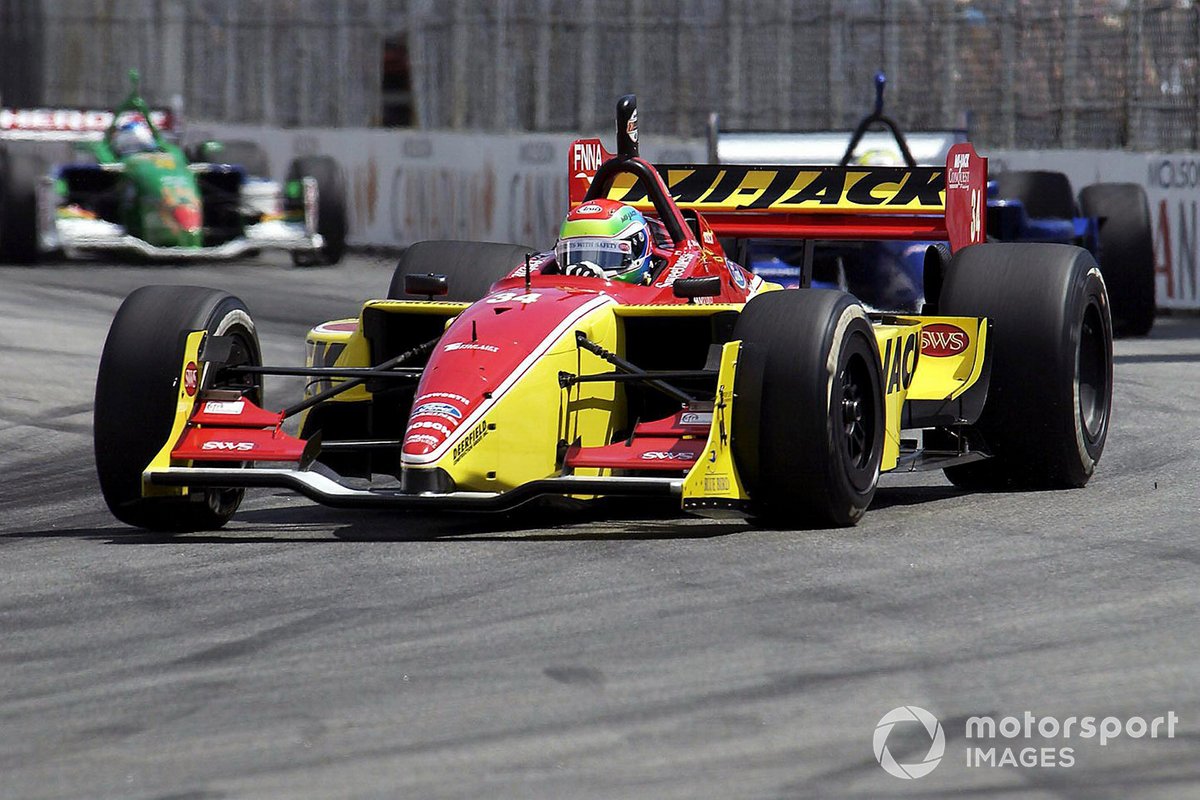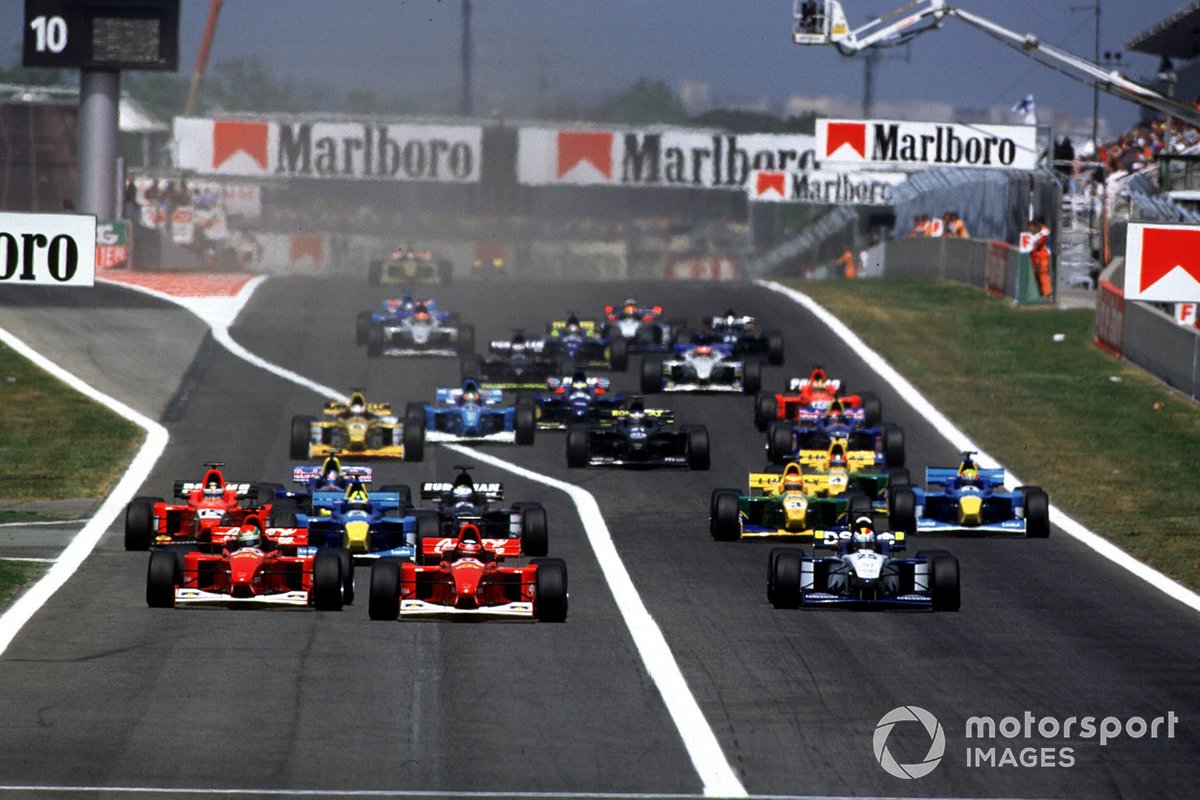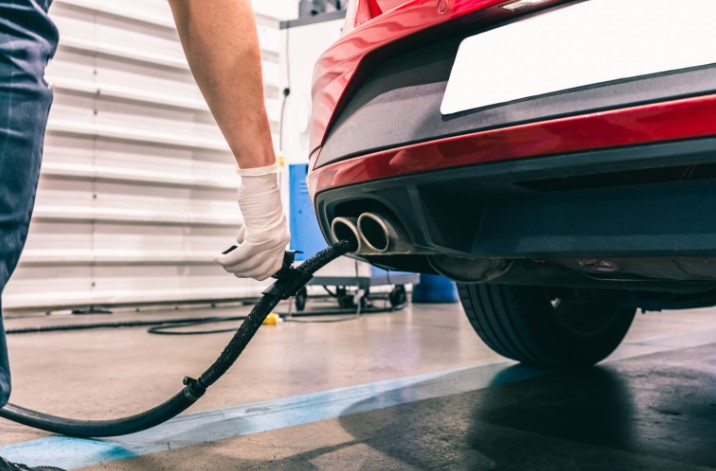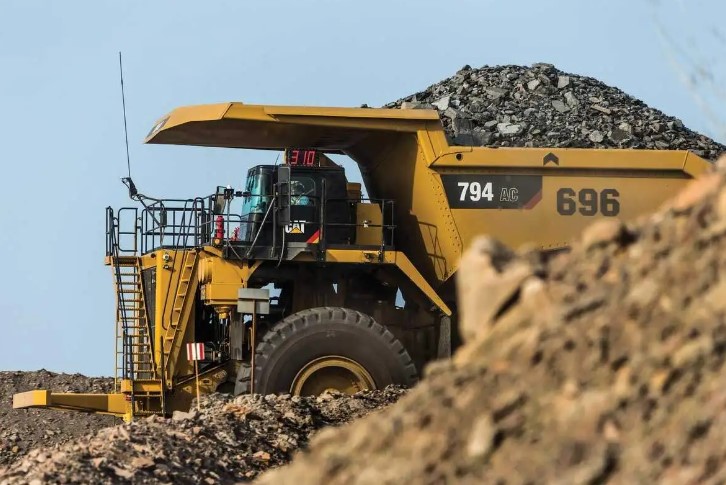Versatile sportscar team manager Chris Mower
From a humble truckie’s mate to mechanic, race engineer and now an experienced team manager, Chris Mower has filled just about every position going on a race team in a career spanning over 30 years on both sides of the Atlantic in single-seaters and sportscar racing.
He followed in the footsteps of father Derek by working as a mechanic for Team Lotus in Formula 1 before the pair teamed up to run the Nordic Formula 3000 team that scooped the title in 2001. Today he is a senior motorsport programme manager at engineering giant Multimatic, assisting Sebastian Metz with overseeing the Porsche 963 LMDh project. It’s been a remarkable journey, but it’s one that Mower believes can be replicated by anyone with brains and the ethic to make use of it.
“I think the only thing that stops people from doing it, if that’s ultimately where they want to go, is coming out of their comfort zone,” he says.
The young Mower spent much of his youth Stateside, having travelled out to California aged four when his father was reunited with former Lotus racer Mario Andretti at the Vel’s Parnelli Jones Indycar team. Mower Sr stayed in the US until 1986, working for numerous teams including Fletcher Racing and Patrick Racing, and his son from an early age recognised that his future lay in motorsport. Mower immersed himself in opportunities to learn about machining and mechanics at school, and cut his teeth fabricating drag racers with Frameworks in Phoenix in his free time at weekends.
“You would buy everything apart from the engine from Frameworks, then fit your own engine and go drag racing,” he says of his first paid job.
Upon returning to England, Mower got a foot in the door with F3000 team BS Automotive, owned by Bob Sparshott – another ex-Lotus man, who had won the inaugural 1985 title with Christian Danner. Mower acknowledges that the opportunity was “largely due to my dad” and vowed that “any other positions that I got from that point on was on my own merit”.
“A lot of the time I would change after that without even him knowing about it,” he says.

Mower currently works at Multimatic and is attached to the Porsche 963 programme
Photo by: Michael L. Levitt / Motorsport Images
He “started off as a gopher” for the 1987 season, then pursued an opportunity as a number two mechanic at the Anglia Cars Formula 3 team which operated out of Argo’s Griston HQ that was later used by Nordic’s F3000 rival Super Nova.
He worked on Alain Menu’s Ralt RT32 in the 1988 British championship, the Swiss occasionally bothering bigger-budget operations, but only managing a single point. His case wasn’t helped by missing round 10 at Donington when the Argo team truck, packed and ready to go with the car inside, was stolen by some escaped prisoners from the nearby HMP Wayland.
“It wasn’t found until the Tuesday the following week, a couple of blocks away from the Norwich police station,” Mower recalls.
When the team concentrated efforts on Group C2 sportscars, Mower joined another Norfolk-based team, Pacific Racing, for its expansion from F3 to F3000 in 1989. Initially working as the number two mechanic on Eddie Irvine’s Reynard 89D, he became the lead mechanic on the spare car for the following two years – his time at the team briefly overlapping with his father’s arrival in 1991 – before his one and only F1 stint at Lotus.
Engineering, he discovered, brought more stresses than working as a mechanic, where “if the car stays together from the start to the end of the race, you know you’ve done your job”. By contrast, engineering a car meant “you’re less in charge of your own destiny”
The 1992 campaign, as Lotus ran Mika Hakkinen and Johnny Herbert, was blighted by money struggles and Mower went three months without being paid at one point, putting a strain on his young family following the arrival of his first child. But despite never going back to F1, he regards it as “one of my most enjoyable years in racing”.
“It was very hard work because at that time we had the active car, which was very new technology, and there was a lot of additional work that was caused by that,” he says. “But it was a great time, they were a great bunch of guys at Lotus. The only reason I never got back into it again was just based purely on opportunities that came up after that.”
He joined his father at the start-up Nordic team for 1993, and was chief mechanic on the single Reynard driven by Alessandro Zampedri. Mower has no doubt that results were hampered by the lack of a second car, before Nordic changed camps to Lola for 1994. This meant a close working relationship with the factory, which was seeking to build back from a disastrous 1993 when it had no cars on the International F3000 grid, and engineer Ben Bowlby – who would work with Mower again 20 years on at Nissan.
“He’s still to this day one of the most clever guys I’ve ever worked with, especially on the aero side – he’s definitely got a knack for that,” Mower says of Bowlby. “He was a really easy guy to work with, very practical and sensible. Everything had a good reasoning behind why he suggested that it was done, and nine times out of ten he was right.”

Nordic switched to Lola chassis for 1994, as the team began working with Bowlby
Photo by: Sutton Images
The car was steadily improved during the year and into 1995, when Nordic retained the services of Marc Goossens. After finishing third at Pau, Goossens gave Nordic its first F3000 win at Hockenheim to end Lola’s three-year drought. He chased Kenny Brack all the way to the flag at Magny-Cours and finished third in the standings behind the dominant Super Nova pairing.
Mower had never been formally trained as an engineer, but from 1996 took on the responsibility.
“When you’re a mechanic you get to learn about the car and you know what differences the changes are going to make,” he says. “You also do your own studying at home so, if you apply yourself, you can learn what you need to know that applies to what is expected of you. It’s almost like getting a college degree – only it’s more specific to what you know you’re going to need.”
Engineering, he discovered, brought more stresses than working as a mechanic, where “if the car stays together from the start to the end of the race, you know you’ve done your job”. By contrast, engineering a car meant “you’re less in charge of your own destiny, because there’s so many other variables that play into the results”.
“For someone that wants to be in control of everything, all of the time, that’s difficult to accept!” he says. “You can put in every hour that you can to come up with what you think will be the best set-up, but it doesn’t always work out that way.”
That realisation was clear at Nordic in 1996, when the language barrier with Japanese driver Akira Iida meant “everything was done through a translator”.
“I never realised before how much fine detail goes into putting emphasis on certain words and hand gestures when a driver is explaining how the car is handling, or you’re explaining why you’ve done the changes that you have,” he says. “When you’re going through an interpreter, all of that is lost.”
After a few lean years for Nordic, with second for Kevin McGarrity at Imola in 1999 a rare bright spot, the arrival of Justin Wilson in 2000 brought third in the wet at Silverstone and a charging drive to second at the A1-Ring. To Mower, it underlines the significance of a top-line driver to a team’s success.

Mower took on race engineering duties at Nordic in 1996 and ran Wilson to the 2001 F3000 title
Photo by: James Bearne
“In a single make formula, if you’ve got a choice of spending £100,000 on a new front wing or car part that’s going to give you a tenth per second a lap, you’re much better off putting that money towards a driver,” says Mower.
“A driver can bring you so much more than any part. I’ve worked with so many drivers that just couldn’t get it done and it is so much easier when you’ve got a good driver because you can focus just on what’s really going to matter.”
The arrival of sponsorship from Coca-Cola was the final piece of the puzzle, and with Tomas Enge joining Wilson for 2001 Nordic was unstoppable. Champion Wilson won three times and enjoyed a run of six races to close the season in which he finished no lower than second, while Enge also contributed two wins and could have finished runner-up in the standings had he not elected to take an early F1 promotion to Prost.
But from that career high, Nordic didn’t kick on in 2002 as Lola introduced an all-new and much more expensive car. Derek Mower wanted to sell up and, with the Coca-Cola backing set to end, Mower Jr wasn’t willing to take on the financial risks of team ownership.
“Considering how long we did it, I would say that our average probably doesn’t look very good, but the years that we were doing well were absolutely fantastic” Chris Mower on Nordic
Running Formula Renault graduate Ryan Briscoe and well-backed Hungarian Zsolt Baumgartner, the year “was a huge disappointment considering what had happened the year before” and Mower elected to take up Eric Bachelart’s offer of becoming team manager at his Conquest Racing Champ Car outfit for 2003.
“The 10 years I was at Nordic were extremely satisfying, and we accomplished a lot,” reflects Mower. “Considering how long we did it, I would say that our average probably doesn’t look very good, but the years that we were doing well were absolutely fantastic.”
Mower explains that the role of team manager is primarily one of preparation prior to the event, overseeing scheduling and the smooth trackside operations of the time. He says the barometer of a job well done is if the event can run smoothly in the TM’s absence.
“A lot of the time during a race weekend you’re there to put out fires and to ensure that everything is still going in the right direction, and that there’s nowhere that you need to stand in if you see things going the wrong way,” he says.

Mower linked up with Wilson again when he joined Conquest for his rookie season of US open-wheel racing in 2004
Photo by: Paul Webb, USA LAT Photographic
“If you have everyone in the right place doing the right thing, and you’re not involved with the strategy because you’ve got people that are better at that than you are, then you’ve done your job well.”
Conquest, as Nordic had been for much of its F3000 tenure, was towards the lower-end of the budget spectrum, and among the minority in 2003 as a Reynard customer. Under the circumstances, rookie Mario Haberfeld didn’t disgrace himself, and neither did Wilson when he arrived for 2004 after a tough spell in F1.
“We were trying to do a hybrid between a Lola and a Reynard,” he explains. “There were a bunch of hybrid assemblies that we got from Forsythe and they all had their own nuances. We didn’t have their engineers to tell you what tracks to run them at and what configuration to run them in, and there was no way we could afford a windtunnel programme, so it was a very tough time.”
After a spell running teenagers Nelson Philippe and Andrew Ranger, Conquest had an all-rookie Brazilian lineup of ex-F1 racer Enrique Bernoldi and Jaime Camara for 2008 when Champ Car merged with the IRL. Cue a year of playing catchup, learning the now long-in-the-tooth Dallara.
“Every team that was coming over from Champ Car was assigned a mentor Indycar team that was going to help them with set-ups, with equipment, with spares and all the rest of it,” says Mower. “Unfortunately for Conquest at the time, we were stuck with Vision Racing.
“Even though that was the team owned by the series owner [Tony George], they were a very competitive bunch so there was no way that we were going to be given anything that could possibly give us any chance of beating them.”
Dan Wheldon had lobbied Panther Racing boss John Barnes to hire Mower for 2009 and he duly obliged. Mower says he had huge respect for Barnes and although he and Wheldon had a few disagreements over the team’s organisation, they always got over their differences.
“It was very educational to work with him, I don’t think I’ve worked for another driver that is as driven,” he says of Wheldon, who was killed in 2011 in a violent crash at Las Vegas. “He was so competitive, you can’t blame him for that. He was a hell of a quick racecar driver, and a huge loss.”

A final corner crash for Hildebrand in 2011 Indy 500 condemned Panther to a third consecutive runner-up finish as Wheldon took full advantage
Photo by: Motorsport Images
Rookie JR Hildebrand replaced Wheldon for 2011 after their union had yielded consecutive runner-up finishes at the Indianapolis 500. Hildebrand looked set to break Panther’s Indy jinx when he led onto the final lap, but misjudged an attempt to clear the lapped car of Charlie Kimball at the final corner and smacked into the wall, allowing Wheldon’s one-off Bryan Herta Autosports machine to steal victory as Hildebrand’s wrecked car slid across the line second.
Mower remained at Panther until the team’s closure and was living in the same village in Indiana as Bowlby, who sought him out as team manager on the Nissan GTR LM Nismo LMP1 programme. It was a clean sheet car and team, which Mower led by employing staff, purchasing equipment, sourcing spares, organising logistics and installing procedures.
The radical front-wheel-drive design is remembered as a failure, with the cars only fractionally quicker than the leading LMP2 machines in their sole race appearance at Le Mans in 2015 before the project was axed. But Mower says there are clear reasons for that – not least the short timeframe involved which meant the car’s hybrid system was inactive, and an attempt to introduce “too many innovations at the same time”.
“Everyone saw the aero concept of the car, but there were so many other things that were a brand-new concept that had never been tried in a racecar before,” he says. “When you put that many together it’s hard enough as it is, but when you have to do it in record time, it just makes it impossible.”
A return to IndyCar followed for 2016 with Kevin Kalkhoven’s KV Racing team, before Mower went to Cosworth – also owned by the late entrepreneur – when the team closed.
“I got along very well with Kevin,” says Mower. “Like my dad, he let you know straight away if he wasn’t happy with something and there was no beating around the bush. I would rather work with people like that compared to someone who doesn’t communicate.”
But it wasn’t long before he was back in a team role again, joining Mazda Team Joest in 2018. This also marked a first involvement with car-builder Multimatic and its charismatic boss Larry Holt.

Nissan LMP1 looked great, but lacked pace and was very complex which meant a lot of time was spent in the garage during its sole Le Mans outing in 2015
Photo by: Zak Mauger/LAT Photographic
“He’s a great guy to work for, one of the smartest people I’ve ever worked with,” says Mower. “I think half of the deals that Multimatic get to this day are because of Larry; he’s such a magnetic character and he really knows his stuff.”
Mower’s time on the Mazda RT24-P IMSA DPi programme was largely spent troubleshooting as there were “quite a few challenges we had with that car”. Once its vibration problems were resolved and reliability improved, it finally became a race-winner against the hitherto dominant Cadillac and Acura in 2019 at Watins Glen with former Nissan drivers Harry Tincknell and Olivier Pla joined by Jonathan Bomarito.
“It was a real joint effort,” says Mower, who notes that the greater quantity of drivers to manage on a sportscar team is one of the biggest differences to the role in IndyCar.
“I couldn’t have wished for it to end up any better. A lot of people still don’t realise but they’re absolutely massive, it’s quite incredible what’s happening with the projects that they’re doing” Chris Mower on Multimatic
When Joest’s deal came up for renewal with Mazda, Multimatic expected to take the programme in-house and offered Mower a chance to remain involved as team manager as soon as the deal came together.
But at the same time, he was approached by Bobby Rahal to join his IMSA GTLM team, running BMW M8 GTEs. It meant reuniting with technical director Brandon Fry, who Mower had previously encountered at Conquest and Nissan, “so I took the bird in the hand rather than the one in the bush”.
“Everything aligned at the right time for me to go and start working for them and I’m really happy I did,” says Mower, who praises 1986 Indy 500 winner Rahal’s hands-off management style. “He lets you do what you get paid to do, and that’s quite rare with a team owner.”
Things started well when John Edwards, Jesse Krohn, Augusto Farfus and Chaz Mostert won the 2020 Daytona 24 Hours. But then came the COVID-19 pandemic, which brought a whole new set of challenges when managing a competitive racing team. No paycuts meant the staff remained committed to the cause and shift rotas were drawn up for staff that had to physically work on the cars.

After considerable struggle, the Mazda DPi project became a winner during Mower’s tenure at Watkins Glen in 2019
Photo by: Richard Dole / Motorsport Images
“We were doing everything that we could that seemed to make sense, and luckily it worked out well for us,” he says. “We could let them decide themselves what they were comfortable of doing up to the limit of what we would let them do, there weren’t many complaints through the whole thing. Luckily, I was there long enough to where I already had a rapport with most of the guys.”
Edwards and Krohn finished the year second in the final hurrah for the class, as Porsche withdrew support for its Core Autosport team and BMW scaled back to contest only the Endurance Cup rounds in 2021. Mower decided to head back to the UK to be nearer to family and walked into a job at Multimatic.
“I couldn’t have wished for it to end up any better,” says Mower, who admits he hadn’t realised Multimatic’s scope until he arrived to work for the company. “A lot of people still don’t realise but they’re absolutely massive, it’s quite incredible what’s happening with the projects that they’re doing.”
In today’s world of hyper-specialisms, it can be easy to become grounded in one particular role and struggle to break out of it. But Mower says progression up the ladder is still possible, as it is in the interest of teams to make sure talent is properly rewarded.
“You have to really want it in order to do it,” he says. “But if you are committed and you show that you are good enough time after time, then there are still no boundaries in the way for anyone starting off as a truckie’s mate and working their way up to team manager.”

The pandemic-impacted 2020 IMSA season with RLL posed new challenges for Mower as team manager
Photo by: Michael L. Levitt / Motorsport Images
Advice for engineers from Chris Mower
• You’re only as strong as your weakest link, and if that weak link happens to drop a wheelnut during a pitstop or run out of fuel then it doesn’t matter who you’ve got in the car because they’re not going to make up the difference. So don’t make shortcuts, get the best driver in the car that you can and don’t leave any stone unturned. No one wants to hear excuses for not winning.
• To have a chance while you’re engineering, you have to be on the same wavelength as the driver. Even working with a driver that you don’t like, you have to put those feelings to one side, purposely spend more time together and do whatever you can to make that relationship work. If the driver doesn’t trust you, then it’s not going to work because they’re not going to give it 100{64d42ef84185fe650eef13e078a399812999bbd8b8ee84343ab535e62a252847}.
• To anybody watching Drive to Survive thinking, ‘I’d love to do that but there’s no way I could do it’, all I would say is, ‘Why can’t you?’ Everyone that’s involved started off in the same place before deciding what they want to do. All you’ve got to do is have a certain amount of brains that you are prepared to apply. If it’s a passion and you know it’s what you want to do, go for it.
• It’s okay to shoot for the stars and have your ultimate job goal in your view at all times, but be prepared to shovel a little sh*t getting there. Typically, you will have to be prepared to start from the bottom and work your way up. There is nothing wrong with starting in the lower formulas and working your way up. In fact, I would highly encourage doing it that way.

Nordic drivers Wilson and Tomas Enge duel into Turn 1 of the Barcelona F3000 race – the year the Mower family’s team dominated the championship
Photo by: Clive Rose / Motorsport Images








